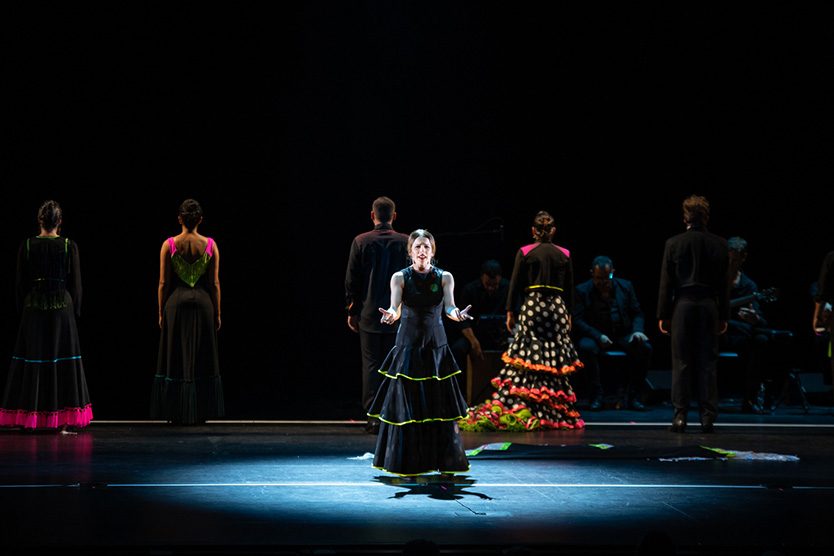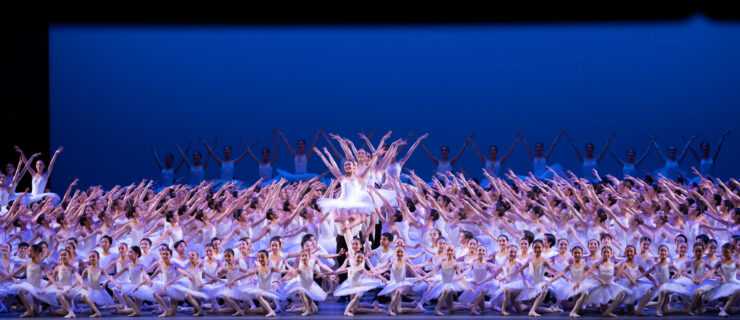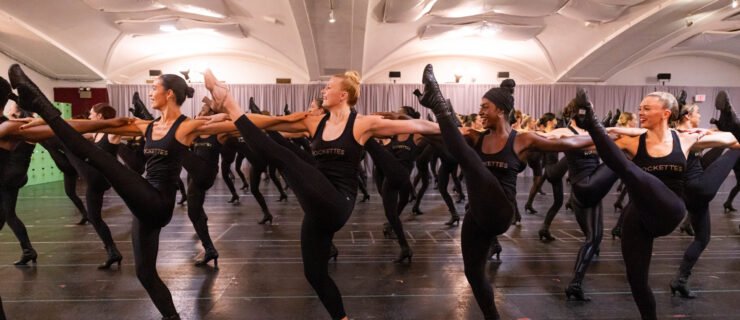Flamenco Vivo Breaks Barriers in FRONTERAS
Flamenco Vivo Carlota Santana, one of the premier flamenco companies in the U.S., is to take the stage at The Joyce Theater in New York City June 21–26, with the world premiere of FRONTERAS. After the pandemic closures halted Flamenco Vivo’s 2020 performances of Latido, the company didn’t just pause and postpone Latido to 2022—instead, they decided to create a newly conceptualized work that is responsive to the past two years.
FRONTERAS is not directly about the pandemic; instead, it addresses the ripple effects and broader trends that are impacting global society. Carlota Santana, the company’s co-founder and artistic director, recalls a conversation with José Maldonado, a co-choreographer of FRONTERAS who also constructed the work’s narrative. As pandemic restrictions receded, Maldonado told Santana he was “surprised by how unpleasant people are being to one another.” His disbelief ignited the desire to create FRONTERAS.
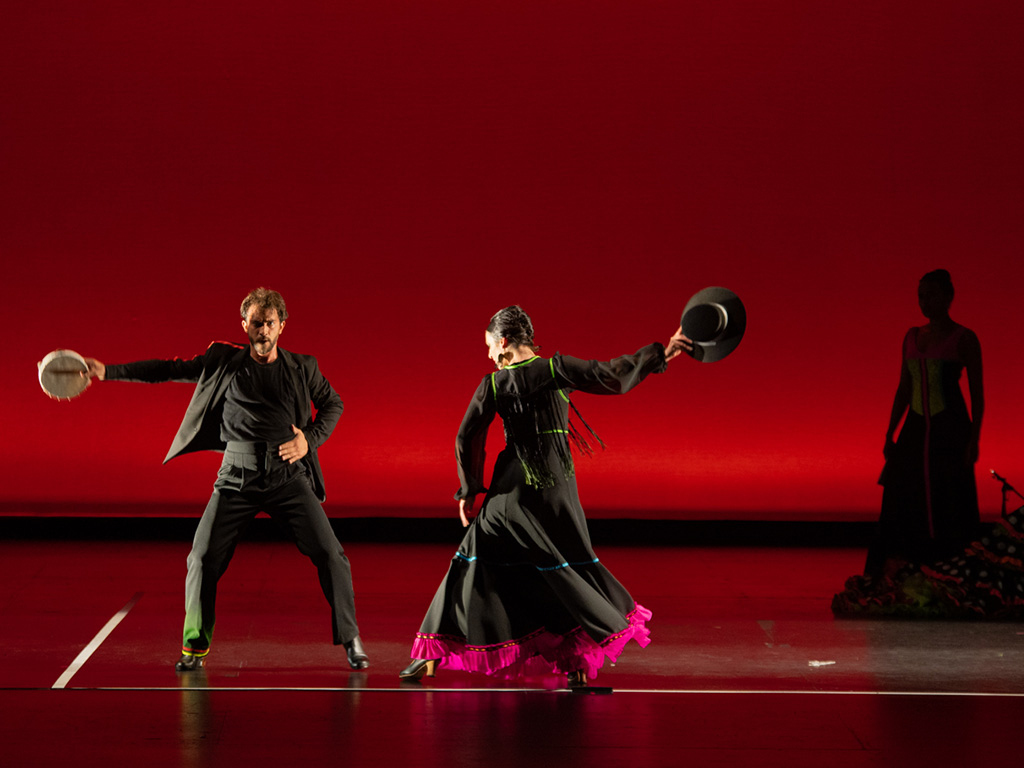
The Spanish word “fronteras” translates to “boundaries,” “borders” or “barriers,” and FRONTERAS opens with the exploration of self-created boundaries that breed a desire to protect and possess what we see as “ours”: Each dancer possesses a unique prop and a section of personal space, and maintains them as something not to be shared. This idea is masterfully embodied by eight dancers through the use of traditional props of flamenco dance, which often serve as identifiers of the genre: castanets, mantón (large shawl), bata de cola (long-trained dress), bastón (walking cane) and abanico (fan).
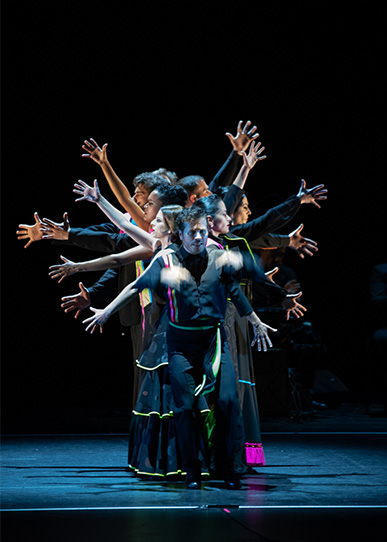
As the piece evolves, through humor and flamenco movement that is both contemporary and based in traditional technique, the choreography asks: “Which is stronger: what unites us or what separates us?” The barriers between the dancers begin to melt, and a web of collaboration is built between performers in duets and ensembles, supported by the special effects of blacklight and luminous costumes. The choreography is supported by four live musicians, and the percussion the dancers create with their feet and the props, such as the castanets and bastón, add another layer of music. The call-and-response relationship between the music and the dance results in the dancers’ integration as instrumentalists who contribute to a real-time rhythmic dialog.
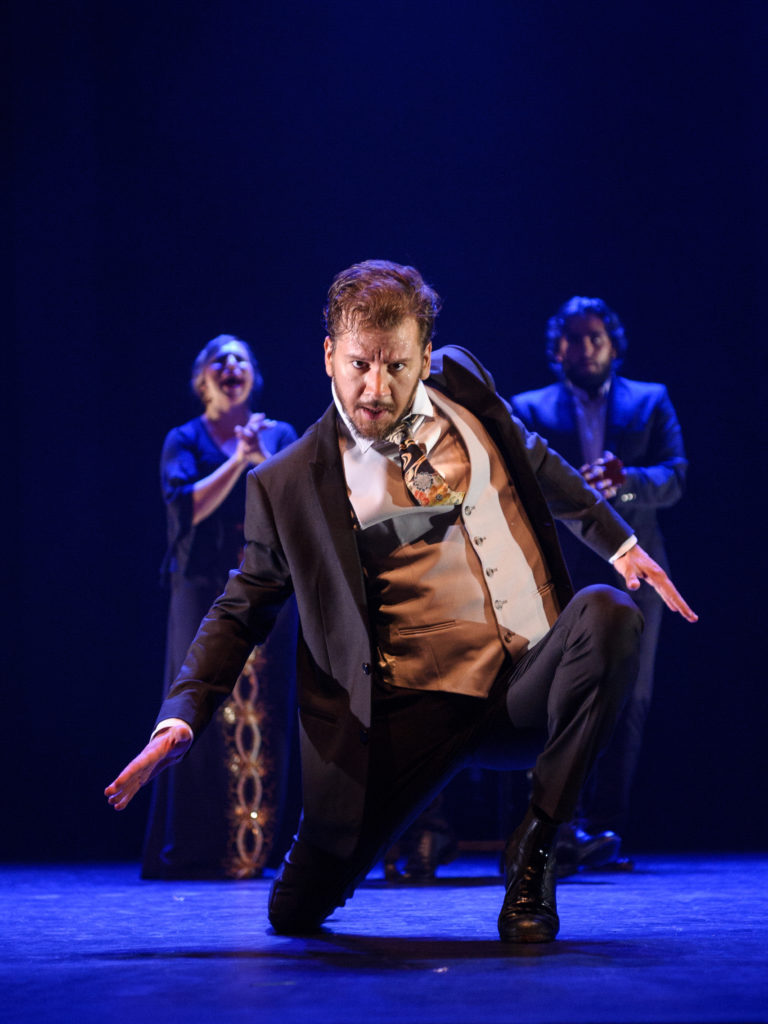
On yet another level, this 75-minute work chips away at other fronteras—the boundaries choreographers face in the world of flamenco dance. Despite a widespread assumption that flamenco enjoys extensive support in Spain, in many ways flamenco is taken for granted there and is more actively cared for and preserved in the U.S. by key trailblazers such as Santana.
Each year in Madrid, the Certamen Flamenco, a Spanish dance and flamenco competition, awards various prizes to up-and-coming cutting-edge flamenco creatives. Among those prizes is the Flamenco Vivo Carlota Santana New York Prize, which grants the awardee the opportunity to mount a commissioned work for Flamenco Vivo. No comparable opportunity exists in Spain. Winning the prize in 2015 brought José Maldonado together with Flamenco Vivo for the first time. In 2016 he did an artistic residency with the company, and then he mounted Pa’ Triana Voy as part of the program for Flamenco Vivo’s 35th-anniversary celebration at Brooklyn Academy of Music’s Avery Fisher Hall in 2018. Maldonado then proposed adding Karen Lugo, a dancer whom he often collaborates with in Spain, to the creative team in 2020. Santana was happy to welcome Lugo into this role and describes Lugo as “just gorgeous, a riveting dancer to watch.” Santana sees Maldonado and Lugo as a “perfectly balanced creative pair. Lugo is more grounded and methodical, and Maldonado’s ideas stretch beyond the clouds. Together they balance one another and create something spectacular.”
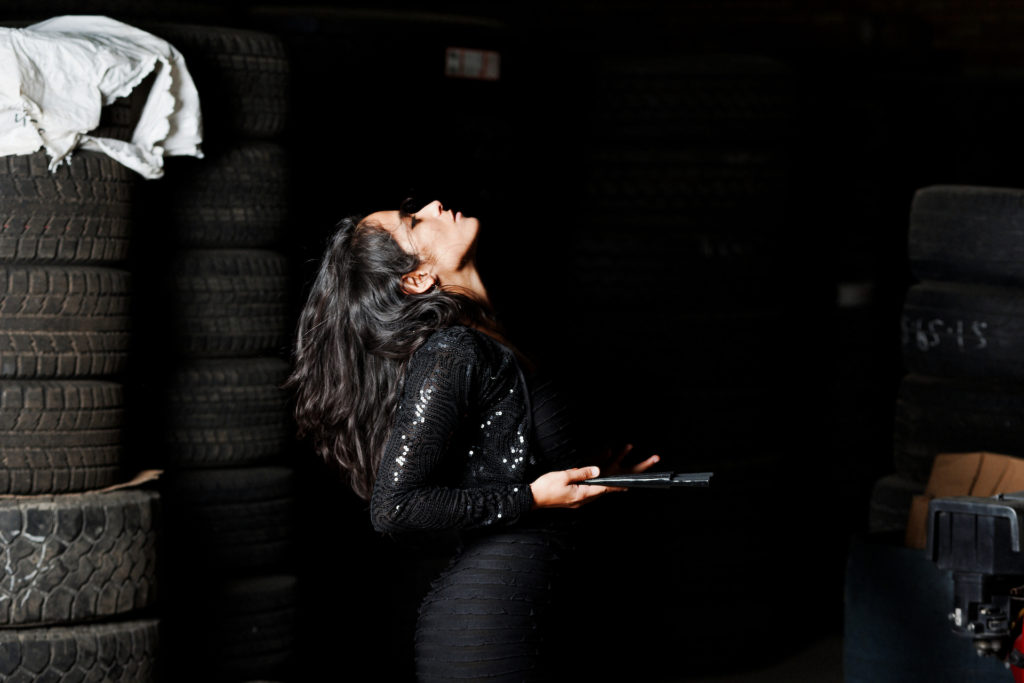
Lugo is no stranger to boundaries herself. As a Mexican-born dancer who has been based in Spain for nearly 20 years, she has had to overcome the preconception that only flamenco from a Spanish-born person is “authentic.” This idea is perpetuated by artists both in and outside of Spain, and more profoundly by audiences. Coming from outside of Spain has been a double-edged sword, Lugo explains. “I have received more help in some circumstances, but I have also lost opportunities,” she says. “There have been times I was contacted to perform, and when they discovered I don’t have a Spanish passport, the offer was rescinded.”
Ironically for a piece about borders, the biggest challenge for FRONTERAS was geography. Maldonado and Lugo live in Barcelona; company dancers reside in Spain, California and New York; and the composer, José Luis de la Paz, is a Spanish expatriate living in Miami. The creative process took place earlier this year in a retreat-like format in North Carolina, Flamenco Vivo’s second home. “It was difficult to try to piece together the music with de la Paz long-distance beforehand,” says Lugo. “However, once we all came together in North Carolina, everything fell into place quickly with the music and dancers.” In addition, Santana says, there was still anxiety about the pandemic. “We were wearing masks and doing weekly testing.”
After the world premiere at the Joyce, FRONTERAS is set to tour the U.S. next year, with performances already confirmed in Florida, California and Kentucky. Plus, Flamenco Vivo Carlota Santana will reach a milestone anniversary next year, celebrating 40 years of boundary-breaking flamenco.
